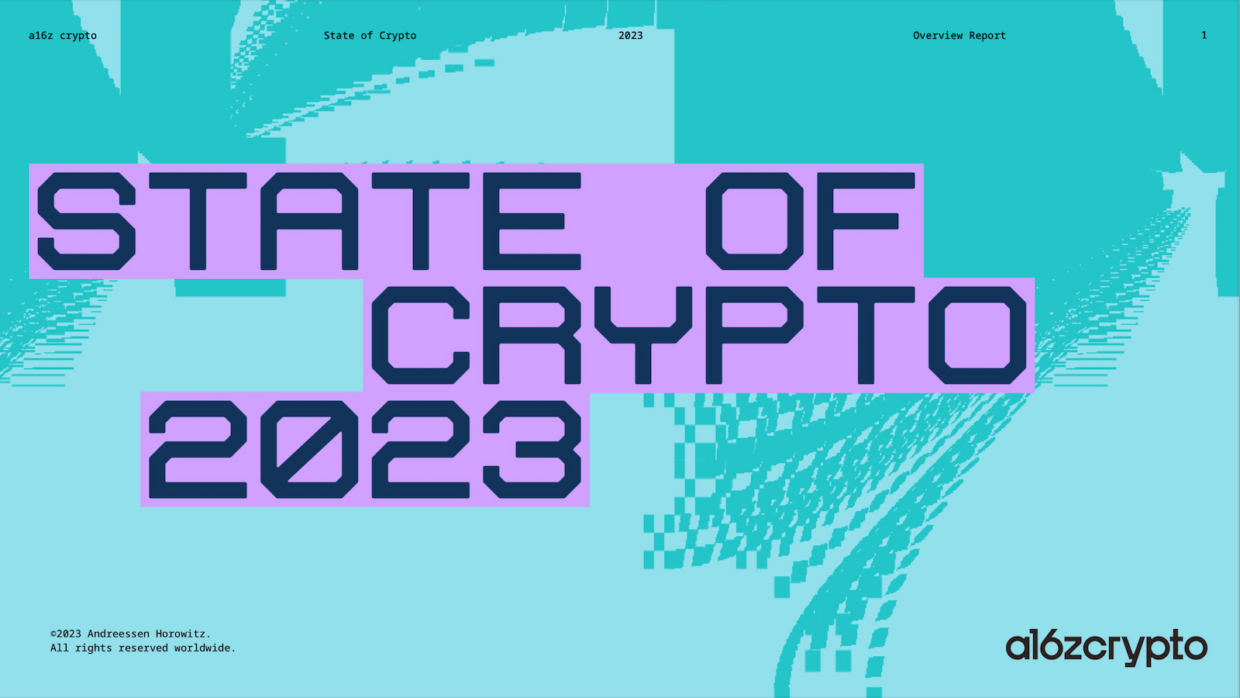The crypto industry is known for its cyclical nature, with periods of high activity followed by “crypto winters.” So what does the current frosty climate mean for the future of crypto, in a world where “crypto” is increasingly becoming a dirty word?
According to Andreessen Horowitz’s latest State of Crypto report, rather than being in a terminal decline, the crypto world is experiencing significant advancements, which are often overshadowed by dramatic price fluctuations and high-profile controversies.
In stark contrast to the broader media attitude towards crypto, the 2023 report reveals a promising landscape, with key infrastructure improvements such as The Merge, a major milestone in decentralized and open-source development. Although such achievements may not always grab headlines like bankruptcies and busts, they serve as crucial indicators of the industry’s growth.
Andreessen Horowitz’s 2023 State of Crypto report emphasizes that the industry’s health extends beyond market prices. The report also introduces the State of Crypto Index, a tool designed to evaluate the industry’s technological progress, focusing on innovation and adoption rather than financial metrics alone. Here are seven key takeaways and interesting facts from the report:
1. More active users and engagement on blockchains
The number of active addresses reached a record high of 15 million last month, doubling in just two years. This growth is fueled by an increasing array of apps and services, such as on-chain games, offering novel ways for users to engage with blockchains. Improved tools and scaling technologies have led to more transactions and lower gas fees, resulting in a 50% increase in total blockchain transactions over the past two years.
2. A resurgence in DeFi and NFT activity
Following a period of speculation and subsequent cooldown, DeFi and NFT activities are once again on the rise, driven by new applications and use cases. Decentralized exchanges (DEXs) traded over $100 billion last month, marking three consecutive months of growth in trading volume. Uniswap, a DEX, has consistently experienced higher trading volume than Coinbase, the largest centralized exchange in the U.S., for two months.
3. Steady growth in the number of active developers
Despite market volatility, nearly 30,000 developers contributed to crypto projects last month. Since the 2020 bull run, the developer community has expanded by 60%. This trend suggests that developers attracted by rising prices remain engaged, indicating that the industry’s growth is not exclusively tied to financial metrics.
4. Blockchains scaling through innovative solutions
Various protocols and projects are actively scaling blockchains to support more transactions using different approaches and technologies. Last year, Layer 2 (L2) scaling solutions accounted for 1.5% of the total fees paid on Ethereum; this figure has now risen to 7%. Additionally, Ethereum’s transition from proof-of-work to proof-of-stake consensus, known as “The Merge,” has significantly reduced its energy footprint.
5. Previously impossible technologies becoming a reality
Zero-knowledge systems, enabling blockchain scalability and privacy-preserving applications, have made significant strides in recent years. Research, developer activity, and usage in zero-knowledge-related fields demonstrate positive trends, hinting at the potential for more groundbreaking applications soon.
6. The U.S. is losing its lead in Web3
The share of crypto developers based in the U.S. relative to the rest of the world has declined by 26% between 2018 and 2022. This drop is partly due to the absence of clear regulatory frameworks, hindering Web3’s growth in the country. However, a growing bipartisan push for legislation could provide much-needed clarity, allowing the U.S. to reclaim its leading position in the Web3 space.
7. Long-term progress across key indicators
A long-term perspective reveals steady growth in market cap, developer activity, and funding activity over the last decade. The price-innovation cycle, where price fluctuations drive new ideas, is crucial when assessing the industry’s progress. Andreessen Horowitz’s State of Crypto Index helps track this enduring progress across multiple meaningful dimensions beyond financials.
By shifting focus from the noise of short-term market movements to the data-driven insights of Web3 technology’s progress, the report presents a healthier picture of the crypto industry than mere market prices would suggest. This is evidenced by the consistent cycle of development, product launches, and ongoing innovation that has become a hallmark of the space.



